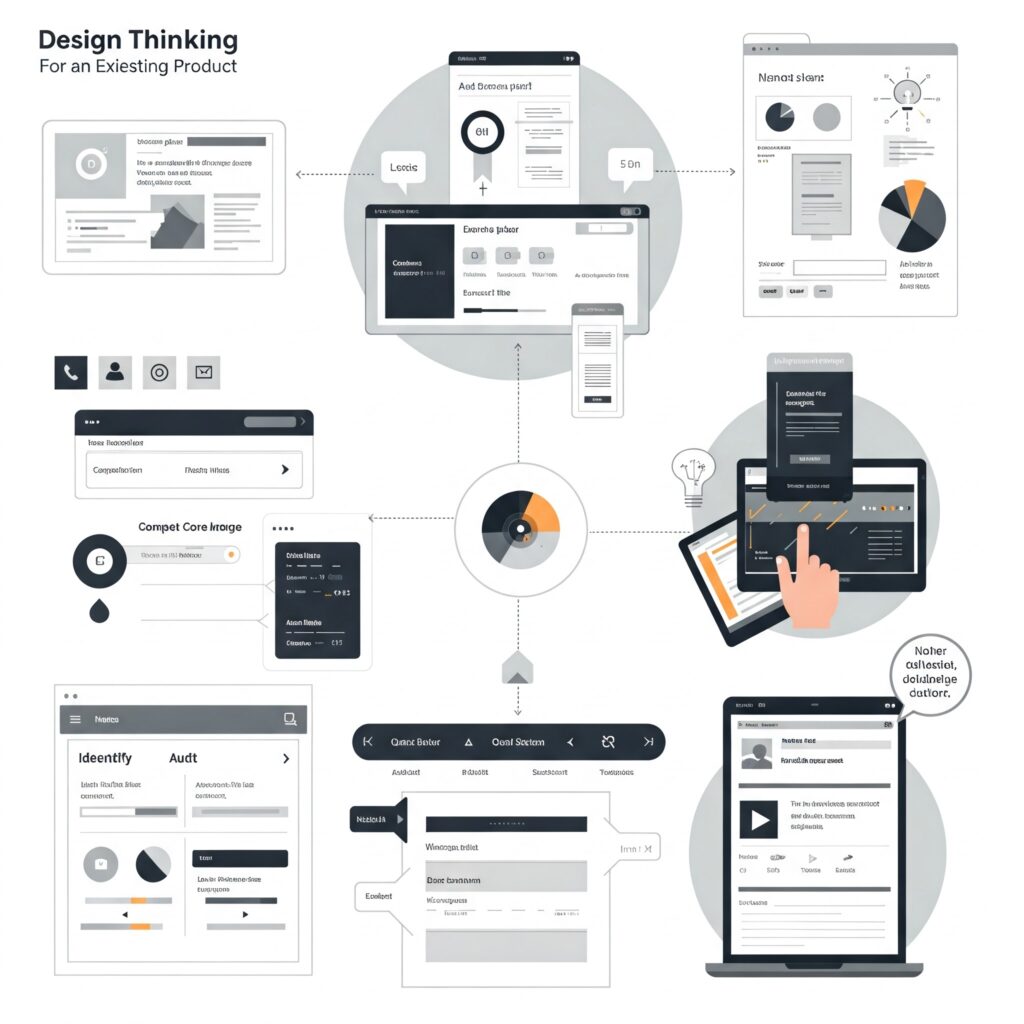Deep Dive: Building a Design System for an Existing Product
Design Thinking: Building a Design System for an Existing Product

In the dynamic world of product design, building a robust design system is crucial for maintaining consistency, scalability, and efficiency. However, integrating a design system into an existing product can be a complex endeavor. This article will explore the principles of design thinking and how they can be applied to successfully build a design system for an existing product.
Understanding Design Thinking
Design thinking is a human-centered approach to problem-solving that emphasizes empathy, creativity, and experimentation. It involves a cyclical process of understanding, ideation, prototyping, and testing. By applying these principles, designers can create innovative solutions that meet the needs of users and businesses.
Building a Design System with Design Thinking
When building a design system for an existing product, it is essential to adopt a design thinking mindset. Here are some key steps to consider:
- Empathize: Begin by immersing yourself in the product and understanding its current state. Conduct user research to identify pain points and areas for improvement. Analyze the existing design patterns and components to identify inconsistencies and inefficiencies.
- Define: Clearly define the scope of the design system and its goals. Identify the core components, patterns, and principles that will guide the design process. Establish a clear understanding of the target audience and their needs.
- Ideate: Brainstorm and generate ideas for the design system’s components, patterns, and principles. Consider how these elements can be applied to the existing product to improve consistency, scalability, and user experience.
- Prototype: Create prototypes of the design system’s components and patterns. Test these prototypes with users to gather feedback and refine the design.
- Test: Continuously test and iterate on the design system. Gather user feedback and make adjustments as needed.
Key Considerations for Building a Design System
In addition to the design thinking principles, several key considerations should be taken into account when building a design system for an existing product:
- Consistency: Ensure that the design system is consistent with the existing product’s brand identity and visual language.
- Scalability: Design the system to accommodate future growth and expansion of the product.
- Flexibility: Allow for customization and adaptation to specific use cases.
- Collaboration: Foster collaboration between designers, developers, and other stakeholders to ensure that the design system is aligned with the product’s goals.
1. Inventory and Audit:
- Conduct a thorough audit of the existing product’s UI: Analyze every screen, component, and interaction. Identify inconsistencies in typography, color usage, spacing, and overall visual language.
- Document existing patterns: Identify recurring UI elements (buttons, input fields, navigation bars, etc.) and document their current usage, variations, and any inconsistencies.
- Gather user feedback: Conduct user interviews and surveys to understand their perceptions of the current product’s design and identify areas for improvement.
2. Define the Scope and Goals:
- Set clear objectives: Define the specific goals of the design system. Is it to improve consistency, increase design velocity, enhance user experience, or all of the above?
- Establish a clear scope: Determine the boundaries of the design system. Will it cover all aspects of the product, or will it focus on specific areas (e.g., web, mobile, marketing materials)?
- Create a roadmap: Outline the phases of the design system development process, including timelines, milestones, and resource allocation.
3. Develop Core Components:
- Create a style guide: Define the core visual elements of the design system, including:
- Typography: Font families, sizes, weights, and spacing.
- Color palette: Primary, secondary, and accent colors with clear usage guidelines.
- Iconography: A consistent set of icons for common actions and elements.
- Build a component library: Design and document reusable UI components such as buttons, input fields, forms, navigation elements, and more.
- Define interaction guidelines: Establish clear guidelines for how UI elements should behave and respond to user interactions (e.g., hover states, animations, micro-interactions).
4. Implement and Maintain:
- Integrate the design system into the product development workflow: Ensure that designers and developers adhere to the guidelines and utilize the components effectively.
- Create a living document: The design system should be a living document that is continuously updated and improved based on user feedback, technological advancements, and evolving design trends.
- Provide ongoing training and support: Educate team members on the design system and its usage through workshops, documentation, and regular communication.
Tools and Technologies:
- Design tools: Figma, Sketch, Adobe XD
- Version control systems: Git
- Component libraries: Storybook, Zeroheight
- Documentation tools: Zeplin, Abstract
Conclusion
Building a design system for an existing product requires a thoughtful and iterative approach. By embracing Design Thinking principles and following a structured process, you can create a valuable asset that enhances the design and development process, improves user experience, and strengthens your brand identity.
